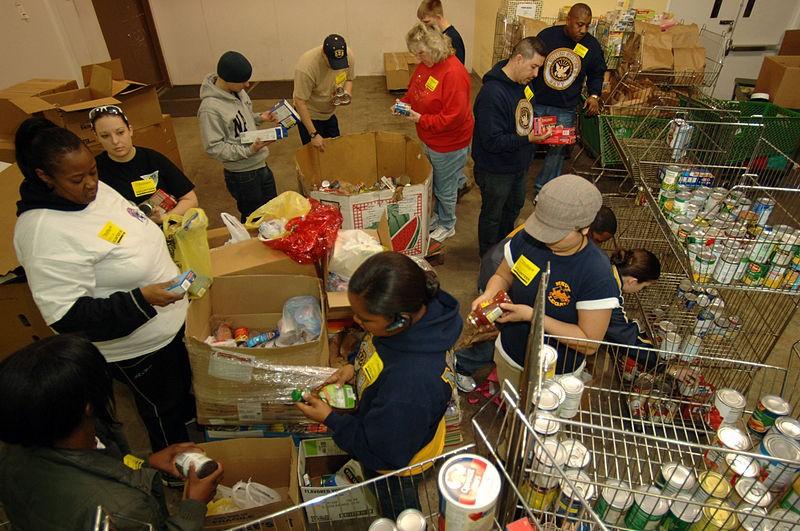People say Tucson is just a “really big small town.” When I started getting involved in the community, I realized that our “small-town vibe” is not something we can take for granted. It is created, in part, through the interconnectedness of the spheres of Tucson’s community.
I’ll show just one example of this, using Tucson’s donated food distribution network.
Once a month, Damascus Road sets up a food bank outside of Park Student Union, and I had the opportunity to volunteer with them in January. A truck from Caring Ministries, another local food bank, delivered us the food.
We unloaded fruits, vegetables, delicious-looking prepared foods, every kind of bread I could imagine and crates and crates and crates of cucumbers.
When we opened, community members and students poured in. I had to constantly restock my fruit table until, barely half an hour later, the food bank had little left, except a box of black bananas and, of course, more cucumbers than a person can eat in a lifetime.
Yet we weren’t done when the people stopped coming in. The cucumbers still had a need. We loaded them back on the truck so they could be taken to Ishkashitaa. The bad bananas and other undesirable foods also had a home. A woman somewhere in Tucson collected the produce for her pigs.
I learned later that the Community Food Bank connects Caring Ministries directly to much of its food, which comes from local grocery stores. This line — the Community Food Bank to Caring Ministries to Damascus Road to Ishkashitaa and piggies — is only one of many of the amazing lines of food distribution in Tucson.
Marco Liu, the director of family advocacy and outreach at the Community Food Bank of Souternn Arizona, said food distribution centers in Tucson have the same two goals: eliminate food waste and make sure the food makes it to all of the people who need it.
He showed me how far this network reaches.
The Community Food Bank acts as the hub for this network of hundreds of partner organizations. It rescues food from grocery stores and produce from Nogales. In its own location, it distributes food boxes and government-issued senior food boxes to the community, but it also works with its partner organizations to make sure all of Tucson has food available.
RELATED: OPINION: Food insecurity still an issue
Then, it delivers food to smaller food banks and connects resources directly to larger ones. It even takes trucks out to rural areas to serve communities there.
The CFB empowers local groups who want to make a difference in their own neighborhoods by providing food to local pantries. It also meets unique community needs, such as working with organizations that provide after-school meals at different locations around Tucson.
The University of Arizona, being such a big part of Tucson’s community, is involved in the chain in more ways than previously mentioned. Some of the non-consumable food in this network is given to Compost Cats.
Also, the UA Campus Pantry was established by a youth governing board member of the Community Food Bank several years ago.
This network does more than give food to people who need it. It works to lift up Tucson’s community and bring it closer together. CFB Tucson often hosts family events, like a pumpkin smash last November that gave families a fun way to compost its pumpkins and a reason for them to interact with the community.
This network brings people close together who would have been far apart. These connections can start at the university. I encourage students who aren’t involved in the community to step into something they find interesting. I’d imagine that they too will find the welcoming, close-knit community that characterizes much of what Tucson does.
Follow Daily Wildcat on Twitter.









